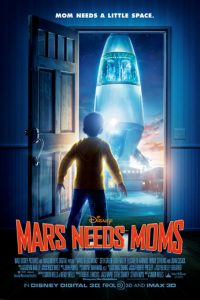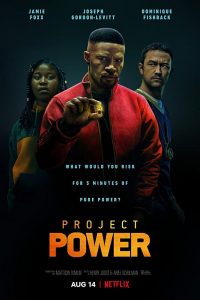Once More Out of the Breach: Gary Westfahl Reviews Pacific Rim: Uprising
 If you are delayed by inclement weather while traveling to see Pacific Rim: Uprising, do not be overly dismayed, because the film might actually be more enjoyable if you walk into the theater an hour after it has started. True, you will struggle to understand some aspects of the plot, but when you are watching enormous, human-controlled robots (jaegers) battling against loathsome reptilian monsters (kaiju) in brilliantly choreographed sequences of urban mayhem, it doesn’t really matter if you know precisely why these monsters are rampaging through Tokyo, or why the future of the human race depends on defeating them. For anyone with fond memories of watching giant monster movies as a child will be excited and exhilarated to observe such creatures embarking upon another destructive campaign, rendered with breathtaking grace and technical skill, in the appropriate setting of the film that arguably represents the genre’s first true masterpiece, Ishiro Honda’s Gojira (1954), and most of its numerous sequels. During these scenes, audiences will remember why they liked the film’s predecessor, Guillermo del Toro’s Pacific Rim (2013 – review here).
If you are delayed by inclement weather while traveling to see Pacific Rim: Uprising, do not be overly dismayed, because the film might actually be more enjoyable if you walk into the theater an hour after it has started. True, you will struggle to understand some aspects of the plot, but when you are watching enormous, human-controlled robots (jaegers) battling against loathsome reptilian monsters (kaiju) in brilliantly choreographed sequences of urban mayhem, it doesn’t really matter if you know precisely why these monsters are rampaging through Tokyo, or why the future of the human race depends on defeating them. For anyone with fond memories of watching giant monster movies as a child will be excited and exhilarated to observe such creatures embarking upon another destructive campaign, rendered with breathtaking grace and technical skill, in the appropriate setting of the film that arguably represents the genre’s first true masterpiece, Ishiro Honda’s Gojira (1954), and most of its numerous sequels. During these scenes, audiences will remember why they liked the film’s predecessor, Guillermo del Toro’s Pacific Rim (2013 – review here).
Yet people are paying increasingly high prices for two hours of entertainment, and hence they will generally arrive in time to see all of this film – which means that they will have to endure an initial hour largely devoted to the unfolding of plot elements so stale and predictable that no revelations about their outcomes can conceivably be labeled “spoilers.” Bad boy Jake Pentecost (John Boyega), who repeatedly says that he’s “not a hero,” will eventually become a hero, as he is forced to abandon his career of low-level thievery to rejoin the corps of jaeger pilots and ultimately play a crucial role in a climactic confrontation with the forces of evil. The same fate awaits another unlikely protagonist, the young jaeger-loving Amara Namani (Cailee Spaeny). Once they are part of the team, Pentecost and former teammate Nate Lambert (Scott Eastwood) openly express their long-standing hatred for each other, and Amara and fellow cadet Viktoria (Ivanna Sakhno) get in a fight, but both pairs of antagonists will eventually become friends and allies in combating the sinister “Precursors” from another dimension who are again scheming to devastate planet Earth. Despite fierce opposition, corporate executive Liwen Shao (Tian Jing) is seeking to replace the human-occupied jaegers with remote-controlled “drones,” but this initiative will prove disastrous, obliging the stalwart jaeger pilots to once again take personal control of their robotic vehicles to save humanity from extinction. In a very different context, Damon Knight once epitomized the attitude of science fiction filmmakers in the 1950s as, “You can’t beat the old malarkey,” and Pacific Rim: Uprising suggests that little has changed since that time. To be sure, the first hour’s dull exposition is periodically interrupted by bursts of spectacular action, but these are all battles between good robots and evil robots that are much less satisfying that the monster-versus-robot free-for-alls that fans of this genre actually crave.
While laboriously unveiling all of the new characters and their problems, the film must also take some time to re-introduce a few familiar figures from the first film. The late Stacker Pentecost, Jake’s father, is at least present in spirit, as he is repeatedly mentioned and his photograph is displayed, and the film is visibly weakened by the absence of actor Idris Elba, who brought enormous gravitas to a potentially laughable story; in retrospect, the decision to kill off his character in the first film must be regarded as this budding franchise’s most grievous error. Stacker’s adoptive daughter Mako Mori (Rinko Kikuchi) is still fighting for the cause, though she has now assumed more of an administrative role. (This time, duplicating a plot device from the first film, it is Amara, not Mako, who is troubled by memories of a traumatic childhood encounter with a kaiju while striving to control her jaeger in an early battle.) Bickering scientists Hermann Gottlieb (Burn Gorman) and Newton Geiszler (Charlie Day) also return, though their changed roles allow for little if any of the comic relief that they brought to the first film.
Most filmgoers will struggle to pay attention to the film’s first hour while patiently waiting for the inevitable opening of another interdimensional “breach” that will release some kaiju and finally bring the film to life; but although audiences may feel like they are watching two different films spliced together, the director and screenwriters do eventually make use of all the elements that they foreground during their interminable opening sequences. These include Gottlieb’s new scientific explanations, which are even more absurd than those that blighted the first film. It seems that if you combine kaiju blood with “rare earth elements,” you obtain a miraculously powerful fuel that could provide the jaegers with “rocket thrusters” to better maneuver during their battles. (The film does not credit a “Scientific Advisor,” and it shows.) I’ll leave it to the chemists to debunk the idea, but it might explain why the Precursors have always shown a special interest in the regions around the Pacific Ocean, where volcanic activity has sometimes produced large deposits of rare earth elements; perhaps, living in a dimension that lacks rare earth elements, they are attacking Earth to obtain those elements and achieve a limitless supply of energy. And, as the film twice observes, “You have to know your enemy’s objectives to defeat them.” (Of course, the Precursors originally had very different objectives, and their new interest in rare earth elements is not only inconsistent with the first film, but it also requires the film to implausibly posit that it would only occur to scientists to analyze the movements of the kaiju ten years after the initial invasion.)
What this aspect of the plot actually reflects is not inspired scientific speculation but the film’s intense focus on success in the burgeoning Chinese market. The obvious signs of this are that it was partially filmed in China and features several Chinese actors in prominent roles; but it is also the case that China currently exports almost all the world’s supply of rare earth elements, and its effort to impose quotas on those elements and further boost its profits recently led to a major dispute within the World Trade Organization. Thus, Chinese audiences might particularly appreciate a film that celebrates the value of rare earth elements, and depicts a hostile power that covets them.
Like Pacific Rim, this film can be praised for coming up with new ideas about how our world might be impacted if enormous monsters from another dimension actually invaded our world and inspired the creation of immense robot defenders. As cars became integrated into our culture, there emerged cadres of car enthusiasts who could instantly recognize every car’s make and model and devoted their lives to repairing and rebuilding their own cars. So, if these jaegers grow to be commonplace, some people might similarly become jaeger enthusiasts, like Amara, who can identify every type of jaeger she sees and constructs her own small jaeger, “Scrapper,” out of leftover materials. And just as there is a thriving market for used car parts, opportunists like Jake and some shady cohorts are hoping to make some money by breaking into abandoned facilities to steal and sell old jaeger parts.
In addition, H. G. Wells’s The War of the Worlds (1898) long ago noted that if advanced aliens did invade the Earth, humans might benefit by learning about their technology: “the gifts to human science [Mars] has brought are enormous.” The film Independence Day: Resurgence (2016 – review here) made the same point, as alien know-how enables humanity to effortlessly conquer space. However, while it doesn’t appear that its humans are gaining much knowledge from the Precursors, Pacific Rim: Uprising innovatively argues that the invading aliens might also benefit by learning from human technology: realizing that their bioengineered monsters were often bested by humanity’s giant robots, the film’s Precursors have responded by building some of their own jaegers, which prove to be important tools in their second effort to conquer the Earth. The aliens even contrive to improve upon humanity’s jaegers by incorporating organic materials into the design, allowing for an unprecedented degree of flexible movement.
What is decidedly not innovative about this film is its passionate espousal of the theme that has dominated recent action films: devotion to one’s family. When actor Dwayne Johnson, in a preview for Skyscraper (2018), opines that his “family” is “the most important thing in the world” to him, he epitomizes this strange obsession: even if the world around you is falling apart, your sole priority must be the safety and well-being of your family. The problem, for Hollywood filmmakers, is that some films feature characters who don’t really have families, requiring the elevation of other relationships to the status of ersatz families. In Maze Runner: The Death Cure (2018 – review here); it was your friends; here, it is your fellow soldiers. Early in the film, cadets are informed that upon enlisting in the force, “You join a family”; later, vainly striving to match the marvelous inspirational speech that his father delivered in the first film, Jake tells them, “You are a family now.” And, needless to say, even in the midst of battles that might determine whether the entire human race lives or dies, the characters in this film will invariably rush off and try to rescue a member of their “family.”
In sum, in contemporary films, it is no longer acceptable for characters to be devoted to their country, their culture, their religion, or any social or political cause; instead, they must avoid all possible controversy and solely express devotion to their family. True, the stories of some films, like this one, do allow for the expression of one other approved motive: saving the entire world, which automatically means saving everything else that audiences might care about. Thus, Jake concludes his speech by saying, “Now help me save the world,” and once the action begins, he exclaims, “It’s our turn to save the world.”
Eager to avoid upsetting anyone, Pacific Rim: Uprising also excises one traditional feature of giant monster movies, the tragic deaths that occur when enormous creatures storm through cities, smashing building after building along the way. One thing that made the original Gojira so powerful was its lengthy scenes of mourning following Godzilla’s first destructive attack, and the original Pacific Rim also acknowledged the numerous victims of kaiju assaults. But modern filmmakers know that the civilian casualties that resulted from the final urban brawl in Man of Steel (2013 – review here) was one reason audiences (properly) disliked the film, which is why subsequent DC films have been careful to evacuate innocent bystanders before the clobbering commences, and this film follows the same policy. Yes, there is one glimpse of Tokyo citizens fleeing frantically from an approaching kaiju – surely a tribute to the scores of Japanese films with similar scenes – but we then observe them running into an entrance to the “underground shelters” that presumably protect the city’s residents from the ensuing violence.
(This brings up another questionable aspect of the Pacific Rim films: since the nations backing the “Pan-Pacific Defense Corps” have surely spent trillions of dollars building and maintaining their armada of jaegers, would they also have enough funds to construct “underground shelters” that could accommodate the thirteen million residents of Tokyo and the countless millions living in other cities around the Pacific Rim? The science behind the films might be debated, but their economics definitely don’t make any sense.)
Other criticisms of the film might be offered, but Pacific Rim: Uprising remains, as noted, a film that gets better as it goes along, and one reason for that might involve an unexpected figure in the closing credits: the “cast trainer/nutritionist.” Confirming that this individual, and possibly others with similar credentials, were important to the film is the Internet Movie Database biography of the actor who played Cadet Suresh, Karan Brar: “To prepare for the role, Brar worked out with a personal trainer for several months both before and during shooting of the film, which included stunt and fight training as well as a monitored diet.” To be sure, the credits also list numerous stunt doubles, including doubles who specifically worked for the major actors, but manipulating jaegers does require considerable physical energy and agility, and doubles can’t perform in close-ups, so director Stephen S. DeKnight might have decided that his cast needed to be whipped into shape to handle their strenuous roles. And when actors are playing soldiers, it arguably seems logical that, like soldiers, they should undergo a form of basic training. One cannot be sure that the film’s scenes were shot in internal chronological order, but it may be that the actors grew more confident and persuasive as the film progressed because they were becoming stronger and more physically fit. This leads to a tentative conclusion: I argued while reviewing Annihilation (2018 – review here) that it might be beneficial for filmmakers to employ real sets and props instead of relying on computer-generated effects; it may also be the case that it is beneficial to employ actors with excellent physical abilities instead of hiring pretty faces who must constantly depend on stuntmen and stuntwomen to do all the heavy lifting.
Unlike the first film, Pacific Rim: Uprising concludes by explicitly setting up a sequel, which would involve humanity creating its own “breach” in order to invade the Precursors’ dimension and have jaegers battle the kaiju on their home turf. However, although del Toro’s scenario has so far yielded one good film, and one-half of another good film, I am not looking forward to another sequel, and I suspect that this film, even if it is hugely successful in China, will not earn enough money to justify another sequel. The only unfortunate consequence is that del Toro and his capable colleagues will be abandoning the field of giant monster movies to the less capable producers of the awful Godzilla (2014 – review here), the awful Kong: Skull Island (2017 – review here ) and the forthcoming, sure-to-be-awful Godzilla: King of the Monsters and Godzilla versus Kong. But one can hope that some other filmmaker might contrive to breathe some new life into this venerable, but perhaps exhausted, genre.
Directed by Steven S. DeKnight
Written by Steven S. DeKnight, Emily Carmichael, Kira Snyder, and T. S. Nowlin, based on characters created by Travis Beacham
Starring John Boyega, Scott Eastwood, Cailee Spaeny, Charlie Day, Burn Gorman, Tian Jing, Jin Zhang, Rinko Kikuchi, Adria Arjona, Karan Brar, Wesley Wong, Ivanna Sakhno, Mackenyu, Lily Ji, Shyrley Rodriguez, Rahart Adams, and Levi Meaden
Gary Westfahl has published 26 books about science fiction and fantasy, including Science Fiction Quotations: From the Inner Mind to the Outer Limits (2005), The Spacesuit Film: A History, 1918-1969 (2012), A Sense-of-Wonderful Century: Explorations of Science Fiction and Fantasy Films (2012); excerpts from these and his other books are available at his World of Westfahl website. He has also published hundreds of articles, reviews, and contributions to reference books. His most recent books are the three-volume A Day in a Working Life: 300 Trades and Professions through History (2015), An Alien Abroad: Science Fiction Columns from Interzone (2016), and the co-edited Bridges to Science Fiction and Fantasy: Outstanding Essays from the J. Lloyd Eaton Conferences (2018). His forthcoming books include Arthur C. Clarke, part of the University of Illinois Press’s Modern Masters of Science Fiction series.







